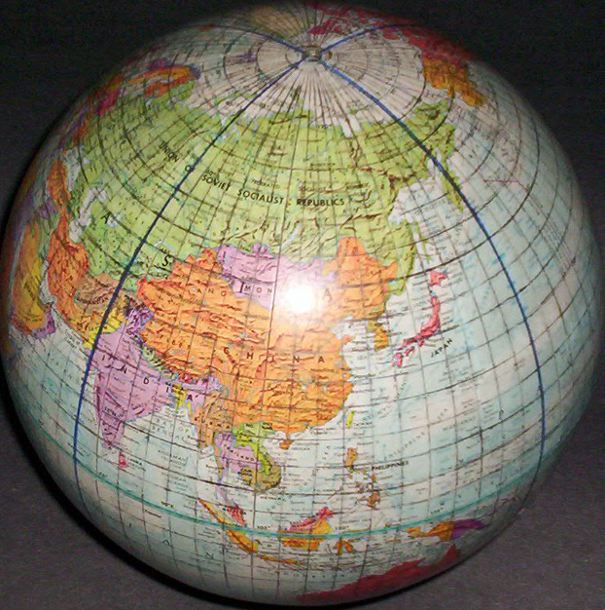Introduction: To go from
one place to another through the medium of air, we need to know the direction
and the distance between the places. Having studied direction in the previous
chapter, let us now focus on the distance. Distance is once again measured on
the map or chart and annotated on the flight plan in the relevant column.
Units of Measurement
In air
navigation we have various units of measuring distance. We need to understand
each of these units. Larger units that we come across in aviation are the
nautical mile (nm), the kilometer (km) and the statute mile (sm). We should be able to convert from one unit of
the above units to another and also in to the smaller units of meter,
centimeter, millimeter, yards, feet, inches, etc.
Nautical mile: A nm is
defined as the arc of a meridian subtending an angle of 1’ at the centre of
curvature of that section of the meridian. Since earth is an oblate spheroid,
the length of the arc varies from 1843 meters at the equator to 1862 meters at
the poles. It is nearly correct (1853m) at 45° latitude, when compared to the ICAO standard of 1852m. One nm is
taken to be equal to 6080 feet in calculations.
·
For all
practical purposes while calculating distances, it is assumed that one nm is
equal to the length of an arc of a great circle subtending an angle of 1’ at the
centre of the earth.
Kilometer: One
kilometer is the length of 1/ 10,000th part of the average distance
between the equator and the poles. It is equal to 3280 feet.
Statute Mile: It is
decreed by British law that one statute mile is equal to 5280’.
- What is
the circumference of the earth in nm, and in km?
- Hint: 1’ = 1 nm; 1° = 60 nm; 90° = ?;
360° = ?
- What is
the radius of the earth?
- Hint: Circumference = 2πr; r = ?
- What is
the average speed at which the earth is going round its own axis (due to
rotation) at the surface of the earth at the equator?
- Hint: Earth completes on revolution
around its own axis in 24 hours.
Conversions
- 41 nm =
76 km; 66 nm = 76 sm
- 1 nm =
1.15 sm = 1.85 km = 6080’
- 1 km =
1000 m; 1 m = 100 cm; 1 cm = 10 mm.
- 1 m =
3.28’; 1’ = 12”.
- 1 yard
= 3’
- 1’ =
30.5 cm; 1” = 2.54 cm.
Calculating Great Circle or
Shortest distances between two points
- Both
places on same meridian – Same and opposite hemisphere cases.
·
Hint: Meridians
are semi great circles
·
Solve: Distance between 30N 7853E and 3753N 7853E is …………
·
Solve: Distance between 3506N 2945W and 3552S 2945W is ……….
- Both
places on the equator - same and
opposite hemisphere case
- Hint: Equator is a great circle
- Solve:
Distance between 00N 2936E and 00N 1242W is …………..
- Solve:
Distance between 00N 2953E and 00N 17836E is ………..
- Both
places on meridian/ anti-meridian – Same and opp. Hemispheres.
- Hint: Again a great circle case
- Solve:
Distance between 20N 160E and 30N 020W is …………
- Solve:
Distance between 20S 140E and 60N 40W is ……….
Departure
Departure is
the distance in nm between two places located on the same parallel of latitude.
Since these two places will always be 090°/ 270° of each other, as all
parallels of latitude cut the meridians at 90°; this is also the rhumb line
distance between the two places.
A look at
the globe should convince us that if two places on the same parallel of
latitude were on the same two different meridians, say 30° E and 40° E, at the equator or at the pole then the distance between them
would be different, although being on the same meridians the ch long in both
these cases would
remain the same; the distance between them would be maximum at the equator and
zero at the poles. Thus it can be seen that departure is a cosine function and
would vary as the Cosine of the latitude. At the equator, latitude is 0° and cosine 0 = 1 and at the poles, the
latitude is 90°, and cosine
90 = 0,

- Departure (nm) = Ch long (minutes) X Cos
Lat.
- 1’ = 1 nm at the equator
- Solve:
Find the shortest and the rhumb line distance between 45N 120E and 45N and
60W
- Solve:
Find the constant true direction and great circle distance between 30S 90E
and 30S 90W
No comments:
Post a Comment